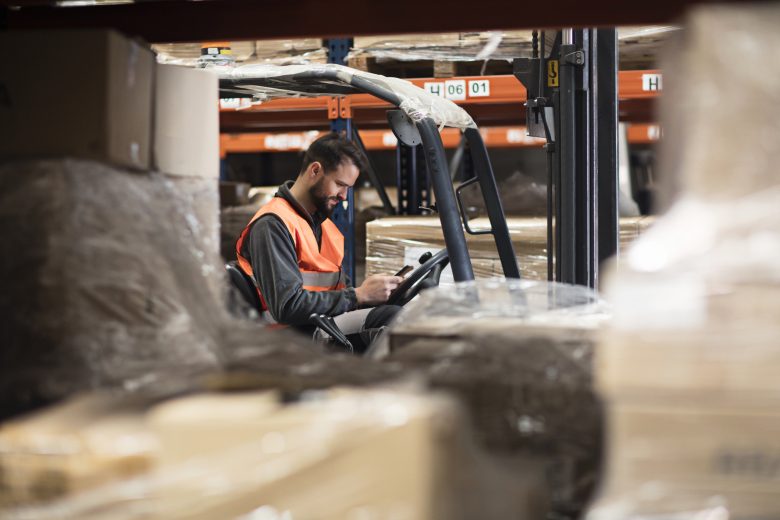When you hear the word distracted, your mind often goes to the cause of the distraction—most commonly, a cellphone. Distracted driving (cellphone), distracted walking (cellphone), distracted dining (cellphone)—but what about distracted working?
There’s no question that mobile devices like cellphones, tablets and laptops can help with productivity in the workplace by increasing communication through phone calls and instant access to digital information like email and work plans. But they can also create a hazard to workers by taking attention away from the task at hand. The distractions caused by mobile devices might (almost) never have grave consequences in an office setting but think about the consequences those same distractions have on a construction site.
According to SafeStart’s free guide Driving Distraction Away, “Distraction isn’t a cellphone issue. It’s not even a driving issue, really. The real problem is our state of mind that allows us to become distracted in the first place.”
Operating heavy machinery, using tools or just being on a busy job site requires workers’ full attention. A distraction from a mobile device diverts their attention away from what they’re doing, jeopardizing not only the worker but everyone else nearby. The risks of injury from the hazards that are already present on construction sites like tripping or struck/crushed-by potential are increased significantly whenever someone is distracted. Clearly, policies that regulate distraction in the workplace need to extend far beyond just the drivers.
The first step is to train employees to recognize the sources of distraction and the states of mind that make them more likely to be distracted in the workplace. Distraction has four sources. There’s visual and manual distraction that leads workers to take their eyes off task and to physically use the device. Then there’s the auditory and cognitive distraction that takes their mind off task. Personal safety and awareness training can provide employees with knowledge of the problem, plus the skills required to fight distraction, and reinforce the message to help them build strong habits and remain safe from distraction in the future.

Next, if there isn’t already a mobile device policy in your workplace, it’s time to develop one. Whether you operate under the bring your own device policy or if workers are provided with devices to aid in their work, there is a need for strict policies regulating the use of these devices during work hours.
A lot of companies prohibit the use of mobile devices on the worksite as part of their health and safety policies and/or best practices. While eliminating mobile devices from the site entirely might not be plausible, establishing strict rules around their use on the worksite is. Removing the cause of distraction on the worksite will send a clear message of the expectations during work hours (and the penalties that could be faced if those expectations are not met).
Here are some tips to get you started:
- Mobile devices are not permitted on a worksite unless authorized by a supervisor.
- If a mobile device must be used on the worksite, designate a safe-use area away from active work.
- Under no circumstances should a mobile device be used while operating machinery, tools, vehicles, etc.
- Limit cellphone use to lunch or break periods.
- When workers are on the site, provide a safe location (locker, lock box, desk drawer) for mobile devices to be kept that allows them to be retrieved during lunch or break.
It’s a good idea to train employees about safety when they’re off the clock too—employees get hurt more off the job than they do at work. Implement human factors training for 24/7 safety to give employees the tools to self-trigger on their frustration or other critical states like rushing, fatigue, or complacency. These states of mind can influence whether they are affected by different sources and types of distraction.
Knowing how to manage distraction while at work could not only save the life of a worker but those around them. And because the same rules will help employees avoid distraction at home and on the road, you’ll be protecting your company’s most valuable asset no matter where they are.

